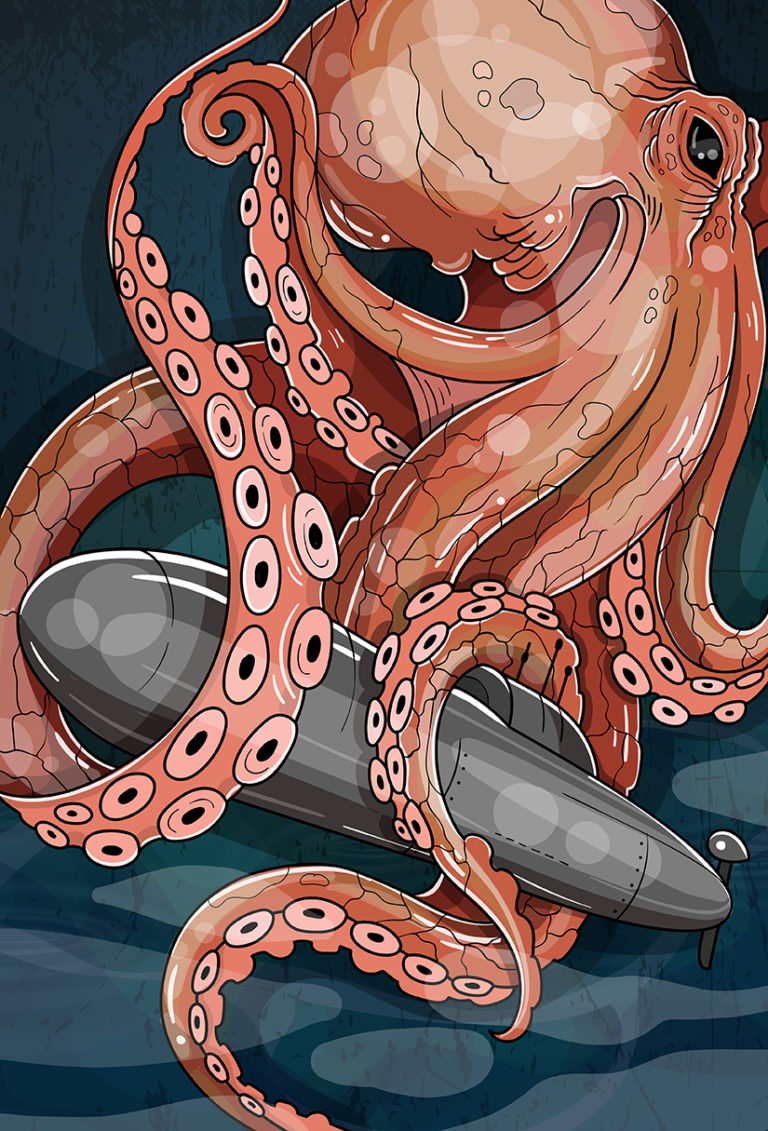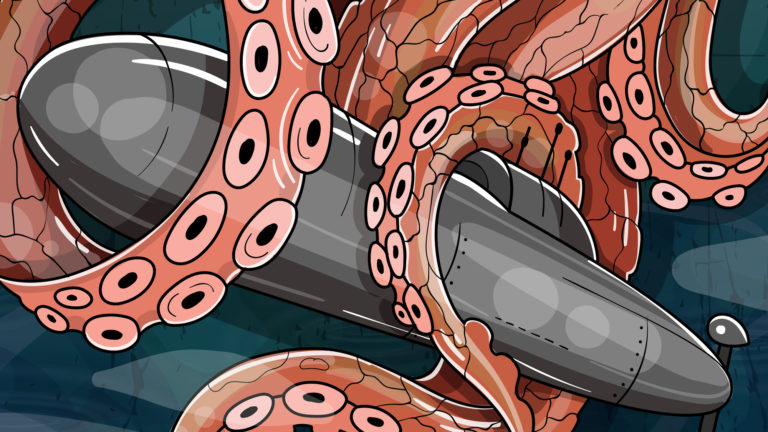
Twenty Thousand Leagues Under the Sea
A Tour of the Underwater World
- Science fiction
- Victorian literature
What It’s About
Underwater Adventures
Twenty Thousand Leagues Under the Sea tells the story of marine biologist Pierre Aronnax, his manservant Conseil and harpoonist Ned Land, who – after joining the hunt for a mysterious sea monster – are thrown overboard when the monster attacks and find themselves prisoners of Captain Nemo, probably one of Verne’s most memorable yet elusive characters. On board the Nautilus, a technologically advanced submarine that everyone has mistaken for a sea monster, the three companions get to experience the vast and endlessly fascinating world under the sea. Twenty Thousand Leagues is an adventure tale, political commentary and scientific utopia all in one – and one of Verne’s most successful works. Its first edition sold out within a week. Despite terrible initial English translations and the sometimes academically dry writing style, its appeal has endured, still capturing readers young and old with the excitement of discovering a new world.
Summary
About the Author
Jules Gabriel Verne was born in Nantes, France, on February 8, 1828. He was the eldest of five children, having one brother and three sisters. Despite having always been interested in literature, he followed in his father’s footsteps and went to Paris in 1847 to study law. However, there he became involved in artistic circles and wrote several plays and short stories. In 1850, one of his plays was published and ran for twelve nights at Dumas’s Théâtre Historique. Verne finished his law studies, but rather than becoming a lawyer, he became secretary of Théâtre Lyrique in 1852 and continued to write short stories and plays. In 1857, he married Honorine Morel, a widow with two daughters. This new responsibility required him to take on a regular profession, and he started work as a stockbroker. He continued to write and also traveled extensively. A journey to Scotland in 1859 in particular affected him deeply and influenced much of his writing. However, his novel Journey to Scotland wasn’t published until after his death, together with eight other books (some of which were in part written by his son, Michel, who was born in 1861). Verne was fascinated by technology and inventions and used much of the material that he gathered on his journeys in his writing. In 1863, he published Five Weeks in a Balloon, which proved an immediate success and kick-started his publisher Hetzel’s idea for the Extraordinary Journeys series. Soon Journey to the Centre of the Earth (1864), Twenty Thousands Leagues under the Sea (1869/70) and Around the World in Eighty Days (1873) followed. In 1871, Verne and his family moved to Amiens, where he became a member of the Academy. Driven by his love of traveling and the sea, Verne bought himself a yacht on which he continued to travel extensively until he sold it in 1886. In March 1905, he fell seriously ill from diabetes and soon died at age 77 on March 24, 1905.












Comment on this summary or Start Discussion